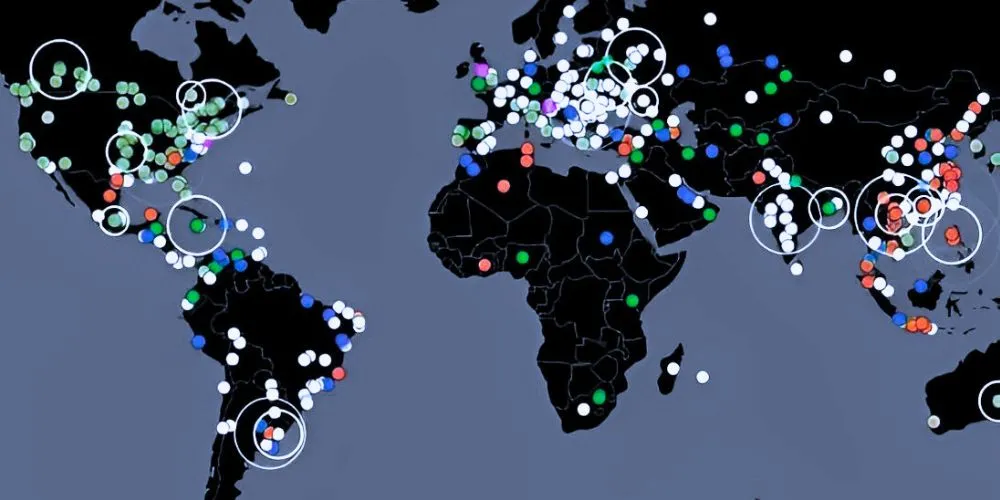The rise of the Internet of Things (IoT) has transformed the digital landscape, connecting billions of devices and enabling new functionalities. However, this connectivity has also introduced significant cybersecurity threats. One of the most notorious examples is the Mirai botnet attack, which emerged in 2016 and highlighted the vulnerabilities of IoT devices. This case study examines the origins of the Mirai botnet attack, its operational mechanisms, the scale of the attacks it launched, and the broader implications for cybersecurity in an increasingly connected world.
Background of the Mirai botnet attack
The Mirai botnet attack represents a new breed of cyber threats that leverage IoT devices to execute large-scale Distributed Denial of Service (DDoS) attacks. Understanding its inception requires examining IoT devices’ rapid proliferation and inherent security weaknesses.
The Proliferation of IoT Devices
The Internet of Things encompasses many devices, from smart home appliances to industrial machinery, all connected to the Internet. By 2021, it was estimated that over 30 billion IoT devices were worldwide, creating numerous entry points for cybercriminals. Many of these devices are manufactured with minimal security features, making them easy targets for exploitation.
The Birth of Mirai
Developed by researchers who became hackers, Mirai was designed to exploit security flaws in IoT devices. It primarily targeted devices using default usernames and passwords, which many users neglect to change. The botnet gained notoriety when its source code was released publicly, allowing malicious actors to create their own Mirai versions easily.
How the Mirai Botnet Attack Operates
Mirai operates using a straightforward yet effective methodology. It exploits the vulnerabilities of unsecured IoT devices to form a powerful botnet.
Scanning for Vulnerable Devices
The first step in a Mirai botnet attack involves scanning the Internet for IoT devices running on default credentials. This automated scanning process lets the botnet quickly identify thousands of vulnerable devices. Common targets include IP cameras, routers, and digital video recorders.
Compromising Devices
Once vulnerable devices are identified, Mirai uses a list of hardcoded usernames and passwords to gain unauthorized access. After successfully logging in, the botnet installs malicious software on the device, transforming it into a “zombie” that can be controlled remotely. This process is typically quick and requires minimal technical skill.
Launching DDoS Attacks
With a network of compromised devices, Mirai can execute DDoS attacks that overwhelm targeted servers with massive amounts of traffic. The botnet has been reported to generate traffic exceeding 1.2 terabits per second, effectively crippling even the most robust online services. This capability can lead to prolonged outages and significant financial losses for businesses.
Major Attacks and Their Impact
The Mirai botnet has been responsible for several high-profile attacks that have underscored the vulnerabilities of the digital landscape.
The Dyn Attack
One of the most significant attacks attributed to Mirai occurred in October 2016. It targeted Dyn, a primary Domain Name System (DNS) provider. The attack disrupted access to many high-profile websites, including Twitter, Netflix, and Reddit. By leveraging the massive scale of the botnet, the attackers generated unprecedented levels of traffic, leading to widespread outages and highlighting the fragility of internet infrastructure.
Impact on Businesses and Consumers
The consequences of the Dyn attack were far-reaching. Many businesses faced downtime that resulted in lost revenue and damaged reputations. Additionally, consumers experienced disrupted access to essential online services, leading to frustration and a loss of trust in digital platforms. The attack emphasized the need for improved cybersecurity measures across all sectors, particularly for IoT devices.
The Ripple Effect on IoT Security
Following the Mirai botnet attack, there was a notable increase in awareness surrounding IoT security vulnerabilities. Businesses and consumers began to realize the importance of securing connected devices, leading to calls for better security standards and practices in IoT manufacturing. The incident also spurred discussions about the regulatory implications of IoT security and the responsibilities of manufacturers.
Broader Implications for Cybersecurity
The Mirai botnet attack has profound implications for the future of cybersecurity, particularly given the expanding IoT landscape.
The Need for Stronger Security Standards
One of the most critical lessons from the Mirai botnet attack is the urgent need for stronger security standards for IoT devices. Manufacturers must prioritize security during design and implement features such as unique passwords, regular software updates, and robust authentication mechanisms. These measures can significantly reduce the likelihood of devices being compromised.
The Role of Consumer Education
Consumers also play a crucial role in enhancing IoT security. Awareness campaigns can help educate users about the importance of changing default passwords, regularly updating firmware, and employing additional security measures, such as firewalls and intrusion detection systems. By fostering a culture of cybersecurity awareness, consumers can contribute to reducing cybercriminals’ attack surface.
Regulatory Developments and Industry Responses
In response to the threats posed by botnets like Mirai, governments and regulatory bodies have begun exploring potential IoT security regulations. For example, California passed a law in 2018 requiring IoT manufacturers to implement reasonable security features. The increasing regulatory scrutiny signals a shift towards prioritizing cybersecurity in developing and deploying IoT technologies.
Conclusion
The Mirai botnet attack serves as a stark reminder of the cybersecurity challenges posed by the rapid expansion of the Internet of Things. By exploiting the vulnerabilities of unsecured devices, Mirai not only disrupted primary online services but also highlighted the urgent need for improved security standards and practices across the industry. Addressing these challenges will be crucial to safeguarding the digital landscape as IoT devices increase. The lessons learned from the Mirai incident must inform future developments in cybersecurity, ensuring that as we embrace the benefits of connectivity, we also prioritize the security of our increasingly interconnected world.










